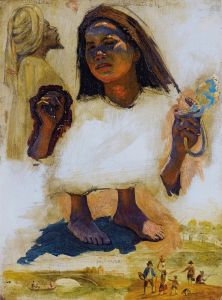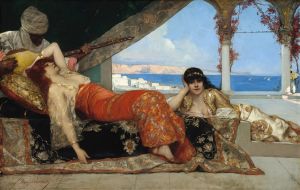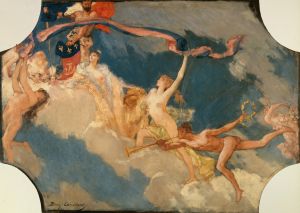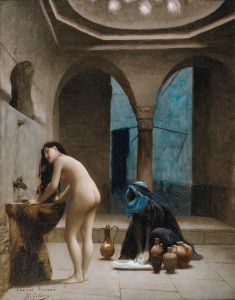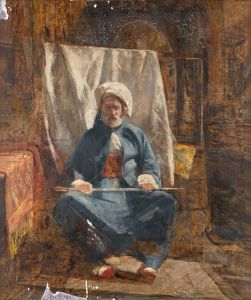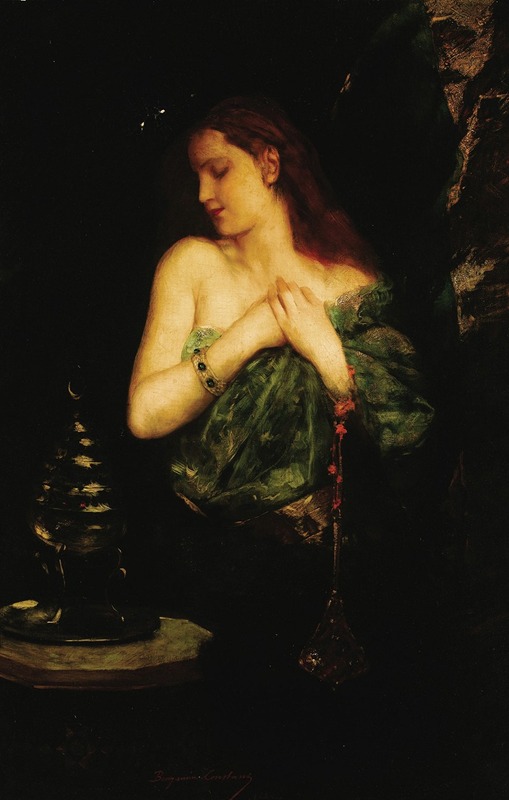
Odalisque
A hand-painted replica of Jean-Joseph-Benjamin Constant’s masterpiece Odalisque, meticulously crafted by professional artists to capture the true essence of the original. Each piece is created with museum-quality canvas and rare mineral pigments, carefully painted by experienced artists with delicate brushstrokes and rich, layered colors to perfectly recreate the texture of the original artwork. Unlike machine-printed reproductions, this hand-painted version brings the painting to life, infused with the artist’s emotions and skill in every stroke. Whether for personal collection or home decoration, it instantly elevates the artistic atmosphere of any space.
Jean-Joseph-Benjamin Constant's Odalisque is a painting that reflects the 19th-century European fascination with Orientalism, a movement in art and literature that sought to depict the cultures, people, and settings of the Middle East and North Africa. Constant, a French painter born in 1845, was known for his large-scale historical and Orientalist works, which often featured opulent settings and richly detailed compositions.
The painting Odalisque portrays a reclining woman, typically understood to represent an odalisque, a term used in the 19th century to describe a female servant or concubine in an Ottoman harem. The subject is depicted in a luxurious and exotic setting, surrounded by intricate textiles, patterns, and furnishings that evoke the artist's interpretation of an Eastern aesthetic. The work exemplifies the Orientalist style, which often romanticized and idealized the cultures it sought to represent, frequently through a Western lens.
Constant traveled extensively in North Africa, particularly Morocco, and his experiences there heavily influenced his artistic output. His works often aimed to capture the grandeur and mystique of the regions he visited, though they were shaped by the artistic conventions and cultural perceptions of his time. Odalisque is consistent with these themes, showcasing his skill in rendering textures, fabrics, and the human form with meticulous attention to detail.
While the exact date of Odalisque is not definitively documented, it is characteristic of Constant's mature period, during which he gained significant recognition for his Orientalist paintings. His works were well-received in his lifetime, and he exhibited regularly at the Paris Salon, one of the most prestigious art exhibitions of the era.
It is important to note that Orientalist art, including works like Odalisque, has been the subject of critical re-evaluation in recent years. Scholars have pointed out that such works often perpetuated stereotypes and reflected colonial attitudes rather than providing an accurate or nuanced representation of the cultures they depicted.
Odalisque remains an example of Benjamin-Constant's technical mastery and his role within the broader Orientalist movement. The painting continues to be studied and appreciated for its artistic qualities, while also serving as a historical artifact that invites discussion about the cultural and political contexts in which it was created.





